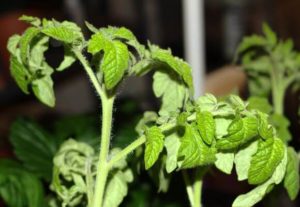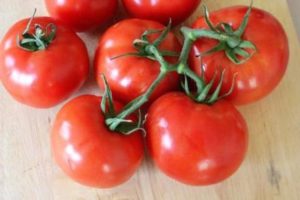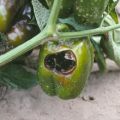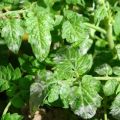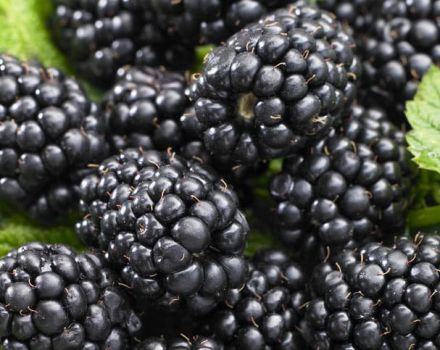Treatment of top rot of tomatoes in the greenhouse and open field
Many vegetable growers who grow tomatoes are familiar with such a disease as tomato apical rot. This disease most often affects young tomatoes and can cause even more dangerous diseases.
What does tomato top rot look like?
The disease is manifested by the appearance of brown specks on the tops of the fruits, which grow. These stains are dry to the touch. With further development of the disease, the spots become larger and flat or depressed areas of dry rot appear. Affected tomatoes stop growing and ripen quickly. It is impossible to eat such fruits that have been struck by the top rot of tomatoes in the greenhouse, since they have a bad taste and they will not bring any benefit.
Five causes of tomato apical rot
Top rot appears on tomatoes for the following reasons:
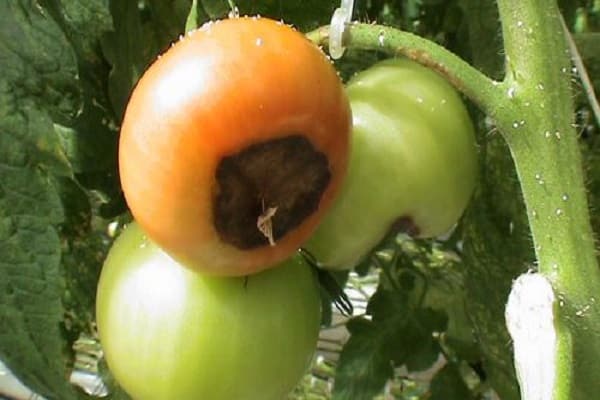
- Imbalance in soil pH;
- Increased content of nitrogen, potassium and magnesium in the plants themselves;
- Reduced content of phosphorus, calcium and manganese;
- Frequent watering;
- Mechanical damage to the root system.
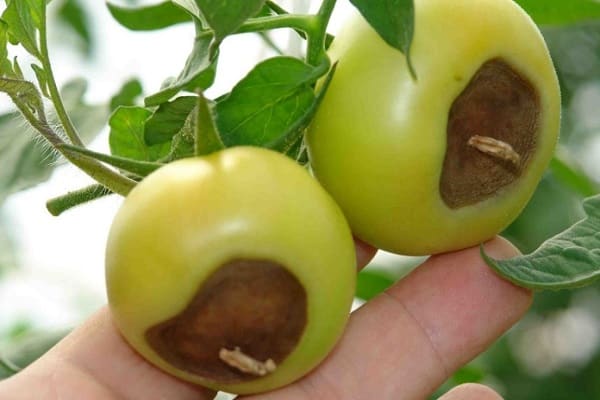
For example, a lack of an element such as calcium. Very often the plant is unable to assimilate calcium from the soil, where there is a lot of it. What are the reasons that prevent tomatoes from absorbing calcium when it is abundant in the soil? It is impossible to answer unequivocally. The most common cause of apical rot is a sudden and frequent change between dry and wet periods.
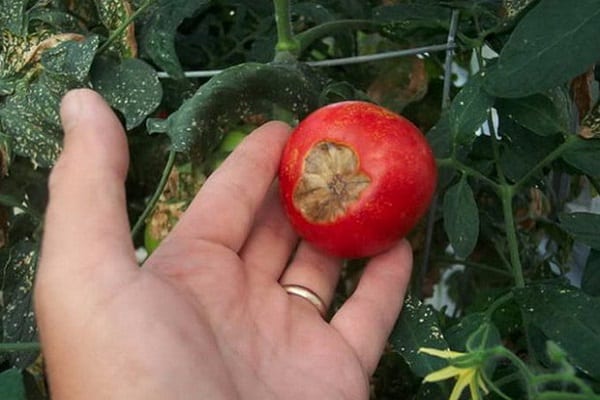
Classification and characteristics
Top rot of tomatoes is classified by etiology. It is of two types:
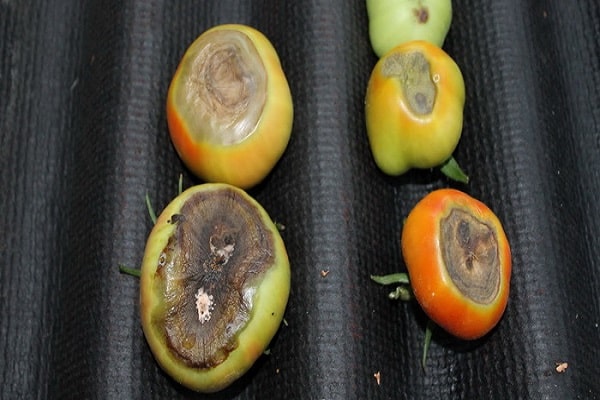
- non-infectious nature,
- bacterial nature.
Top rot of tomatoes can affect plants both on open ground and in shelters. Rot affects young tomatoes, especially the "cream" form. Such tomatoes are more affected by the type of rot that occurs in tomato cells without appearing externally. Initially, brown concentric spots appear on the berries, soft when touched.
Gradually they grow, turn black and become depressed and flat. The tomatoes themselves harden, dry out and fall from the bush. At high humidity, dry rot turns into wet rot. Affected fruits ripen faster than healthy ones. When there is little moisture for the bush, the leaves take moisture from the tomato for themselves. The cellular structures of the tomato decompose - this is how the top rot of the fruit occurs. In addition to tomatoes, other vegetables of the nightshade family also get sick.
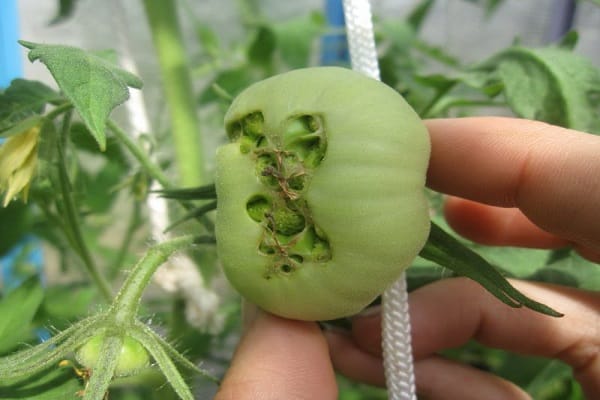
The top rot of tomatoes is bacterial in nature, wet and soft when touched. The color is dirty green, the shade is closer to brown. Defeat has uneven boundaries.The rot spreads quickly and has a strong unpleasant odor. Fruits that lie on the ground are affected.
What needs to be done
The emergence of apical rot on the bushes is not a sentence yet. The harvest can be saved. Control measures are known. The first thing to do is to remove the affected fruits and leaves near them from the bush. This will prevent complications.
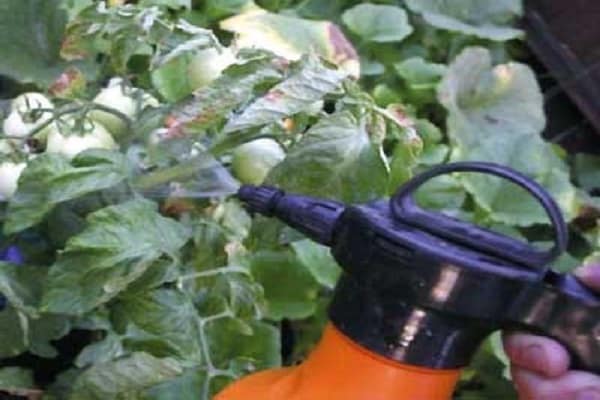
Prevention and treatment
In fact, it is always easier to prevent disease than to cure. This statement is fully applicable to tomato diseases.
Prevention of apical rot disease begins with proper preparation of the soil for planting, as well as observing some rules of agricultural technology:

- The soil for a tomato should be slightly acidic to moderate, sandy, light.
- It is imperative to observe humidity in the range of 65-70%. It is moisture fluctuations that play a decisive role in the development of tomato top rot.
- Lighting should be uniform and continuous, about 18 hours a day.
- Air temperature for normal development of tomato 18-22 aboutFROM.
- For the prevention of diseases, on the 35-40th day, the seedlings are sprayed with a solution of Bordeaux liquid. They are also treated with this solution after each rain.
- Plants are sprayed more frequently in greenhouses than outdoors. For this, solutions of calcium nitrate or calcium chloride are used.
- Under each bush, the soil is powdered with wood ash, and also poured into the root with ash diluted in water or dolomite.
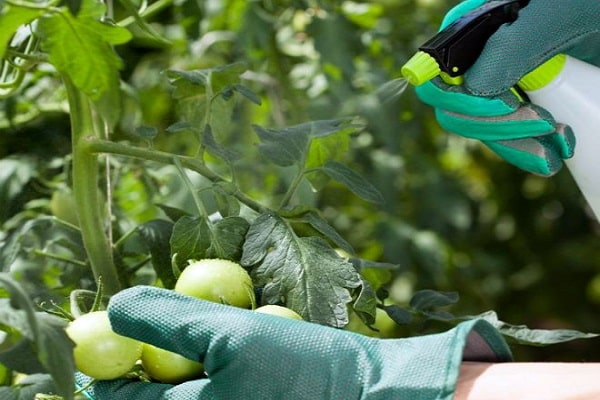
Tomatoes are treated with a solution of Bordeaux liquid, as well as by spraying them with Brexil Ca, calcium nitrate, etc.
Folk remedies are also used to treat vertex rot on tomatoes:
- One liter of milk is poured into a bucket and filled with water up to 10 liters. This solution is applied to the leaves and fruits of tomatoes once a week. Repeat the procedure 2-3 times.
- Dried egg shells crushed in a mortar are also used. It is crushed into powder, which is sprinkled with tomato holes before planting seedlings in them.
- Two tablespoons of chalk, crushed into powder, are mixed with one liter of warm water and water the bush with the defeat of the tomatoes.
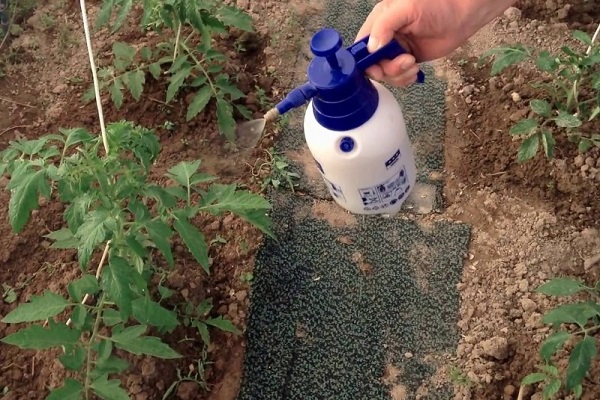
However, it must be remembered that excess calcium can lead to a lack of potassium in vegetables, and this is fraught with disturbances in the ripening of fruits. Therefore, an integrated approach and moderation in soil fertilization is needed.
Some recommendations
When studying the top rot of tomatoes, it was found that in 90% of cases of this disease, the cause is irregular watering at elevated temperatures. The regularity of soil moistening, temperature and air humidity should be optimal (temperature 18-22 degrees, humidity 60-70%). With an increase in air temperatures, watering should be increased and vice versa. The ventilation of greenhouses also plays an important role. The lower leaves of the plant are also best removed to improve aeration and prevent the tip. Drip irrigation and soil mulching have proven themselves well, since an optimal microclimate is created near the root, and the plant develops normally and bears fruit.
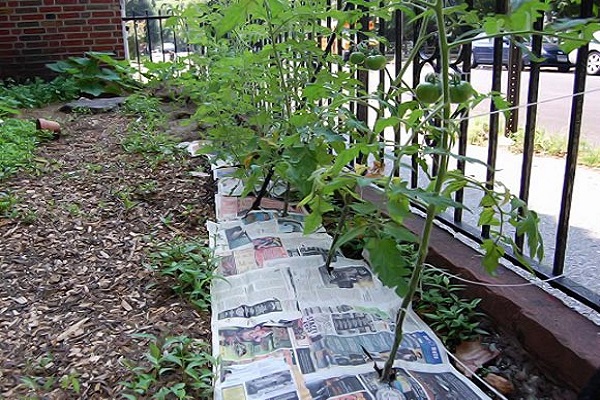
Excessive application of manure and poultry droppings can cause top rot in tomatoes, as the soil pH is disturbed and it becomes more acidic.
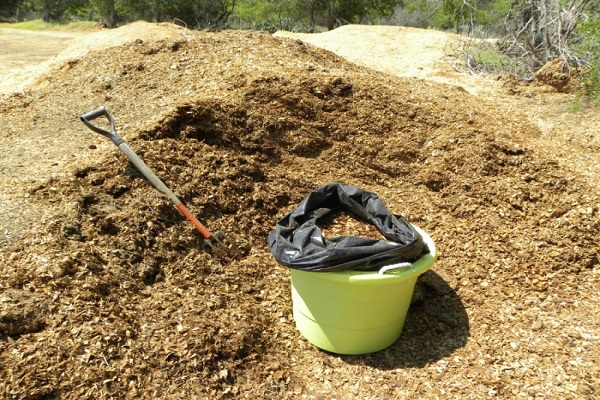
When loosening the soil under tomato bushes, you should be careful, as injuries to the rhizomes can cause apical rot. Due to damage, the plant cannot absorb the minerals it needs from the soil and becomes sick.
